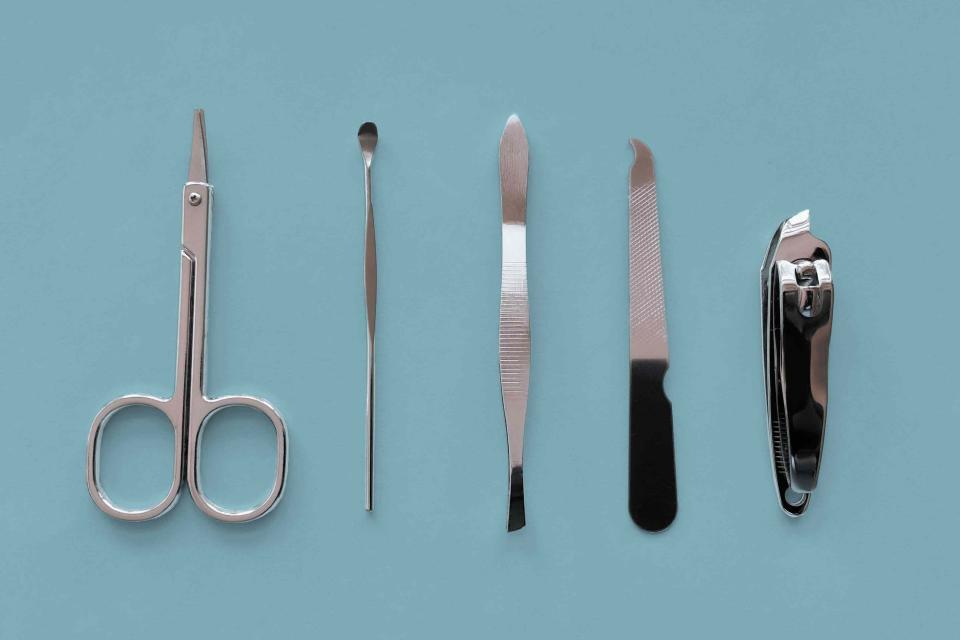Here’s Why You Keep Getting Hangnails—and What to Do About It
Nail experts share common hangnail causes and pro tips on how to treat them.

Grace Cary/Getty Images
The term “hangnail” came about likely because of its appearance: a small, torn piece of skin or cuticle that hangs off the side of your nail bed. For as tiny as they are, they sure can be a nuisance. Sometimes they can even cause discomfort, irritation, or pain, and once you spot one the temptation to pick at it or pull it off intensifies until it’s finally gone. So what causes hangnails in the first place, and what’s the best approach for getting rid of them? We’ve got answers.
RELATED: Why You Should Be Using Cuticle Oil Regularly, According to Nail Experts
What Causes Hangnails?
Hangnails have varying causes, but one of the biggest culprits is dry skin, says nail artist Linh Ngo. Dry skin is more likely to become irritated or broken, which ultimately leads to the skin or cuticle cracking and pulling away from the nail bed.
“Another common cause of hangnails is damage to the fingers and nails,” Ngo adds. “If you use your hands for rough tasks, your skin is more susceptible to injury and trauma, which can cause hangnails.”
Mazz Hanna, nail artist and founder of Nailing Hollywood, notes that another common cause of hangnails is picking or biting around the cuticle. Essentially, she says, “Anything that can cause the skin in your cuticle area to raise can cause a hangnail to form.”
How to Get Rid of Hangnails
The temptation to pick at a hangnail is far too real, but Hanna stresses that you should avoid doing this since it can only make matters worse. Also, she says that you shouldn’t just pull it out since this can lead to more irritation and even a painful infection. Instead, focus on treating the issue itself to get that sweet relief.
“Keeping your nails clean and hydrated is the best thing you can do for a hangnail,” Hanna says. “Instead of picking or tearing your hangnails, you can use a cuticle softener to remove the dead skin without cutting.” Try The Manicurist’s Cuticle Softener & Pusher Duo ($30, Manicurist) or Nailtopia Cuticle Softener ($10, Ulta).
Alternatively, she says you can gently clip off the hanging skin with a pair of clean, sanitized nail clippers. Afterward, apply a soothing cuticle oil to keep the area hydrated and to help accelerate the healing process. Hanna’s favorite is Chance of Sunny Head to Toe Oil in Calming Lavender ($20, Chance of Sunny) since the lavender has natural antimicrobial properties.
Pro Tip: If you’re tempted to pick at your hangnail, Ngo recommends placing a bandage over the area while it heals.
Related: What Is Nail Slugging—and Why It's the Simple Solution to Brittle Nails
How to Prevent Hangnails
Consistent nail care is the best way to ensure you rarely have to deal with hangnails. This means keeping them clean and moisturized.
“Make sure to put lotion on after you wash your hands, as soaps can dry out your skin,” Ngo says. “For added hydration, consider using a vitamin-rich cuticle oil at night so your skin can soak in the moisture while you sleep. This is extra important during the dry winter months when hangnails are more likely to occur.”
Sally Hansen’s Nail Rehab Oil Cuticle Balm ($10, Ulta) is a nice one to keep in your purse or at your desk since it’s a solid versus an oil. And good old lotion works, too. Make it something you look forward to by keeping a cute and nicely scented lotion on hand, like the Rare Beauty by Selena Gomez Find Comfort Hydrating Hand Cream ($18, Sephora) or L'Occitane Mini Hand Cream ($13, Sephora).
Lastly, Hanna says to curb the biting and picking habit pronto if this is something you regularly do. This can lead to more than hangnails and is a chief cause of bleeding, irritation, and infections around the nail bed. If you’re using harsh chemicals or working with your hands, protect them with gloves and follow up with a gentle cleanser and cuticle oil or balm.
For more Real Simple news, make sure to sign up for our newsletter!
Read the original article on Real Simple.

